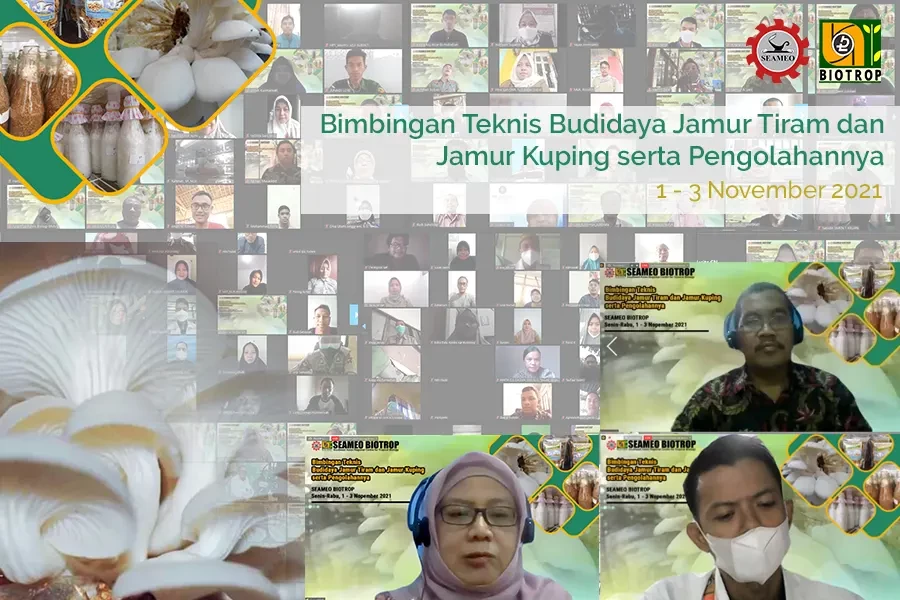SEAMEO BIOTROP holds technical guidance for Oyster Mushroom and Ear Mushroom Cultivation and its Management for three days, starting from 01 – 03 November 2021 online via zoom. This activity aims to increase the participants' knowledge of both theory and practice regarding the cultivation of Oyster mushrooms and Ear Mushrooms including making seeds, mushroom maintenance, harvesting and processing mushrooms into snacks that are of interest to the community and have added value.
This activity presents a resource person who has experience in the field of mushroom cultivation and processing, namely Mr. Samsul Ahmad Yani, S.Si (Mushroom Cultivation Advisor, SEAMEO BIOTROP). The materials presented were: Cultivation of Oyster Mushrooms and Ear Mushrooms; Preparation of pure F0 media and culture; Production of media and mushroom seeds F1, F2, and F3; as well as processing products from these mushrooms.
SEAMEO BIOTROP plays an active role in increasing the capacity of human resources in the field of tropical biology, one of which is this technical guidance activity. Competent resources are one of the keys to being able to utilize and optimize biodiversity. One type of biodiversity that has not been utilized optimally is mushrooms. SEAMEO BIOTROP has also been researching and developing mushroom cultivation for consumption since 2010.
This event was officially opened by the Director of SEAMEO BIOTROP, Dr. Zulhmsyah Imran. He revealed that there are many types of mushrooms in Indonesia but not all of them are used optimally. "There are approximately 600 types of mushrooms that have the potential to be consumed, 200 types have been utilized and 35 of them have been commercially cultivated," he said. “In 2013, SEAMEO BIOTROP has established a pilot unit for the cultivation of oyster mushrooms and ear mushrooms, starting from seedling production, maintenance, production and sales of raw mushrooms to their processed products,” he added.
The implementation of this technical guidance activity is also in line with the SDG's objectives. They are reducing hunger by increasing food security by diversifying food and opening up opportunities for decent work and economic growth. The number of participants who registered for this activity was 522 participants spread from several agencies including Government, Private, Universities, Schools, Research Agencies, and NGOs. (day).
 Monday, 01 November 2021 on 4:00pm
Monday, 01 November 2021 on 4:00pm
